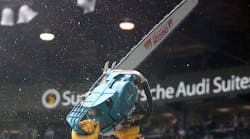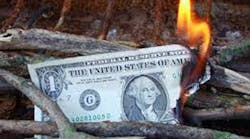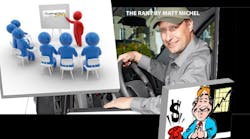The fast food chain Wendy’s made news recently for contemplating “surge pricing.” The backlash was immediate, unfair, and appeared to result in a retreat. Nevertheless, it was not a bad idea. Wendy's replied to negative coverage by explaining what they were trying to accomplish:
“Digital menuboards could allow us to change the menu offerings at different times of day and offer discounts and value offers to our customers more easily, particularly in the slower times of day," said the statement. In other words, the pricing strategy was actually intended to provide benefits to consumers.
The lesson: take all initial bad news you hear with a grain of salt until it's verified. But since the subject is pricing, here are some examples used today.
Surge Pricing
Surge pricing was developed by the ride sharing industry to encourage more gig-economy drivers when the number of riders exceeded transport capacity. The ride sharing services raised prices, which encouraged more drivers to abandon whatever they were doing to offer rides, increasing the supply to balance the demand. Without surge pricing, riders would experience long wait times due to an excess of riders and relative shortage of drivers.
Off-Season Pricing
Related to surge pricing is off-season pricing practiced by the hotel industry. When hotels are “out-of-season” for tourists, discounts are offered to encourage people to book the hotel during slow times. Again, we have excess rooms available, given the demand. Hoteliers lower prices to encourage more demand. People like off-season pricing because they save money.
Off Peak Pricing
Utilities have been playing around with time-of-use rates and peak pricing for some time. Given the declining reserve margins, utilities are wise to incentivize off-peak usage. For a break on power costs, many consumers have voluntarily allowed utilities (or third parties) to reduce energy usage by controlling residential thermostats remotely when needed because demand is up and/or intermittent wind and solar are failing to produce. People may gripe a little, but they voluntarily take advantage of opportunities to save on their power bills. Off-peak pricing is generally accepted.
Airline Pricing
It is hard to figure out airline pricing. The airlines have developed sophisticated algorithms that help them fill plans for the maximum revenue. If demand appears to be strong, prices for a flight start increasing. No one likes the variable pricing games airlines play, though everyone seems okay with them.
Similarities
While the sophistication of the pricing models varies, all five of the pricing methods discussed above are essentially the same. They are based on supply and demand for a commodity that expires.
When supply exceeds demand, prices will either fall or there will be surpluses. Surplus products can be sold tomorrow. Surplus hotel rooms or airplane seats expire. Conversely, when demand exceeds supply, prices will rise or shortages will result. For a commodity service, a shortage is better than a surplus.
Pricing Semantics
The economics of pricing is rational. The response, as Wendy’s executives discovered, is not. It is emotional. When dealing with emotions, semantics make a difference. If the Wendy’s trial balloon described the pricing plan as “matinee” and “late night” pricing, it is likely it would have been well received. People would perceive it as a discount and benefit. When it comes to pricing, how things are framed is everything!
It is completely rational to use the same supply and demand pricing model that everyone accepts for ride sharing, travel, power, and entertainment following a natural disaster. Suddenly, there is a demand that exceeds local supply. If prices do not rise, shortages and waiting lines will result. Raise prices and some people will voluntarily wait for better pricing while other sources of supply (e.g., out of town or out of state contractors) will be encouraged to incur the added costs of working out town. The result would be more people would be taken care of faster. This is price as a market signal.
The Future of Contractor Pricing
HVAC is an industry that has yet to completely adopt flat rate pricing. Yet, the future of HVAC pricing will be more along the lines of the airline model. Especially with artificial intelligence, pricing will become dynamic and set by an algorithm designed to maximize labor utilization. Call volume, weather, forecasts, backlogs, history, sales promotions, inventory, supplier specials, purchasing breaks, labor capacity, competitive pricing intelligence, and a host of other variables will result in pricing changes on a technician’s tablet in real time. No one will talk about pricing. Like airline pricing, no one will understand it. When called out, contractors will blame AI and people will likely grumble, but accept it.
Dynamic service pricing will be adopted by sophisticated contractors first. These tend to be larger and/or owned by private equity. It will likely happen slow, then all at once.
Matt Michel is a member of the Contracting Business Hall of Fame and author of the book, “The Power of Positive Pricing.” This can be purchased from Service Nation. Learn more at www.ServiceNation.com.







